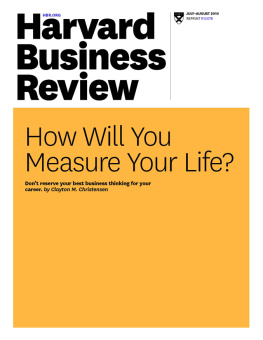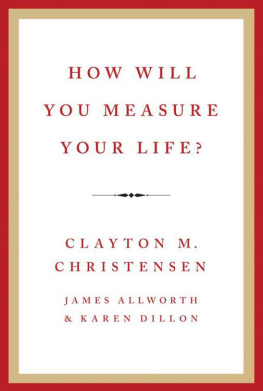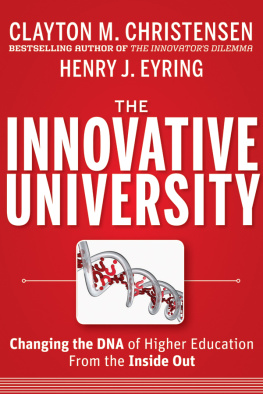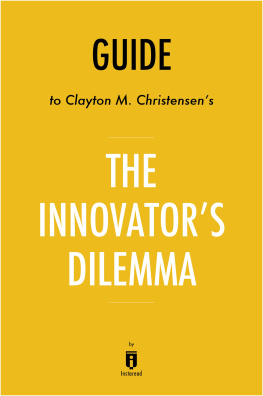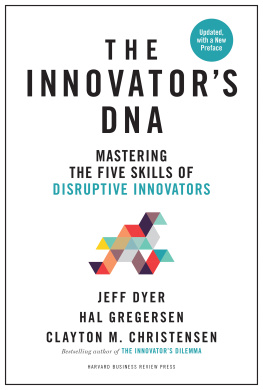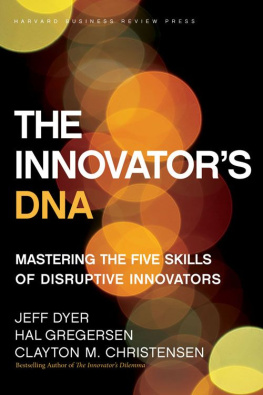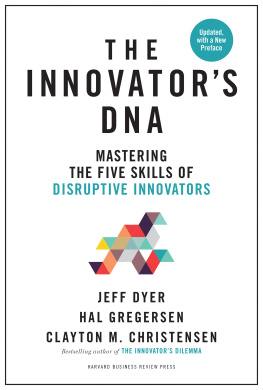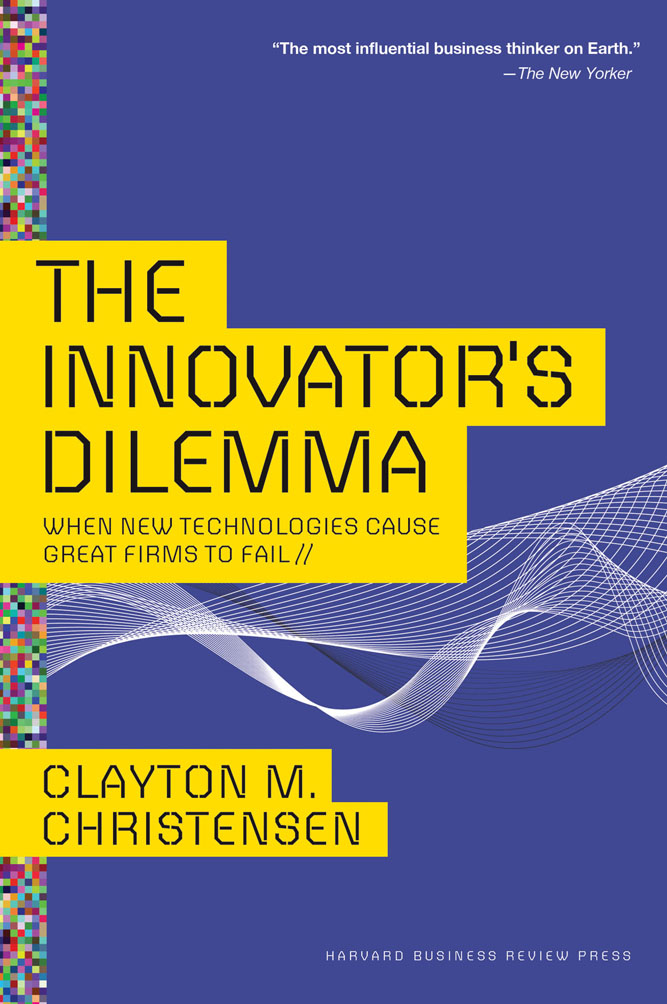Clayton M. Christensen - Disruptive Innovation: The Christensen Collection (The Innovators Dilemma, The Innovators Solution, The Innovators DNA, and Harvard Business Review article How Will You Measure Your Life?) (4 Items)
Here you can read online Clayton M. Christensen - Disruptive Innovation: The Christensen Collection (The Innovators Dilemma, The Innovators Solution, The Innovators DNA, and Harvard Business Review article How Will You Measure Your Life?) (4 Items) full text of the book (entire story) in english for free. Download pdf and epub, get meaning, cover and reviews about this ebook. year: 2011, publisher: Harvard Business Review Press, genre: Business. Description of the work, (preface) as well as reviews are available. Best literature library LitArk.com created for fans of good reading and offers a wide selection of genres:
Romance novel
Science fiction
Adventure
Detective
Science
History
Home and family
Prose
Art
Politics
Computer
Non-fiction
Religion
Business
Children
Humor
Choose a favorite category and find really read worthwhile books. Enjoy immersion in the world of imagination, feel the emotions of the characters or learn something new for yourself, make an fascinating discovery.
- Book:Disruptive Innovation: The Christensen Collection (The Innovators Dilemma, The Innovators Solution, The Innovators DNA, and Harvard Business Review article How Will You Measure Your Life?) (4 Items)
- Author:
- Publisher:Harvard Business Review Press
- Genre:
- Year:2011
- Rating:4 / 5
- Favourites:Add to favourites
- Your mark:
Disruptive Innovation: The Christensen Collection (The Innovators Dilemma, The Innovators Solution, The Innovators DNA, and Harvard Business Review article How Will You Measure Your Life?) (4 Items): summary, description and annotation
We offer to read an annotation, description, summary or preface (depends on what the author of the book "Disruptive Innovation: The Christensen Collection (The Innovators Dilemma, The Innovators Solution, The Innovators DNA, and Harvard Business Review article How Will You Measure Your Life?) (4 Items)" wrote himself). If you haven't found the necessary information about the book — write in the comments, we will try to find it.
Clayton Christensens definitive works on innovationoffered together for the first time
Will you fall victim to disruptive innovationor become a disruptor yourself? Tip the odds in your favor with the bestselling books that have made Christensen one of the worlds foremost authorities on innovation. Youll also get his award-winning HBR article, full of inspiration for finding meaning and happiness in your life using the principles of business.
The 4-volume collection includes:
The Innovators Dilemma: When New Technologies Cause Great Firms to Fail
In one of the most influential business books of our time, Christensen introduced the world to the concept of disruptive innovation, showing how even the most outstanding companies can do everything rightyet still lose market leadership. Dont repeat their mistakes.
The Innovators Solution: Creating and Sustaining Successful Growth
Citing in-depth research and theories tested in hundreds of companies across many industries, Christensen and co-author Michael Raynor provide the tools organizations need to become disruptors themselves.
The Innovators DNA: Mastering the Five Skills of Disruptive Innovators
Christensen and coauthors Jeffrey Dyer and Hal Gregersen identify behaviors of the worlds best innovatorsfrom leaders at Amazon and Apple to those at Google, Skype, and the Virgin Groupto show how you and your team can unlock the code to generating and executing more innovative ideas.
How Will You Measure Your Life? (HBR article)
At Harvard Business School, Clayton Christensen teaches aspiring MBAs how to apply management and innovation theories to build stronger companies. But he also believes that these models can help people lead better lives. In this award-winning Harvard Business Review article, he explains how, exploring questions everyone needs to ask: How can I be happy in my career? How can I be sure that my relationship with my family is an enduring source of happiness? And how can I live my life with integrity?
Clayton M. Christensen: author's other books
Who wrote Disruptive Innovation: The Christensen Collection (The Innovators Dilemma, The Innovators Solution, The Innovators DNA, and Harvard Business Review article How Will You Measure Your Life?) (4 Items)? Find out the surname, the name of the author of the book and a list of all author's works by series.

